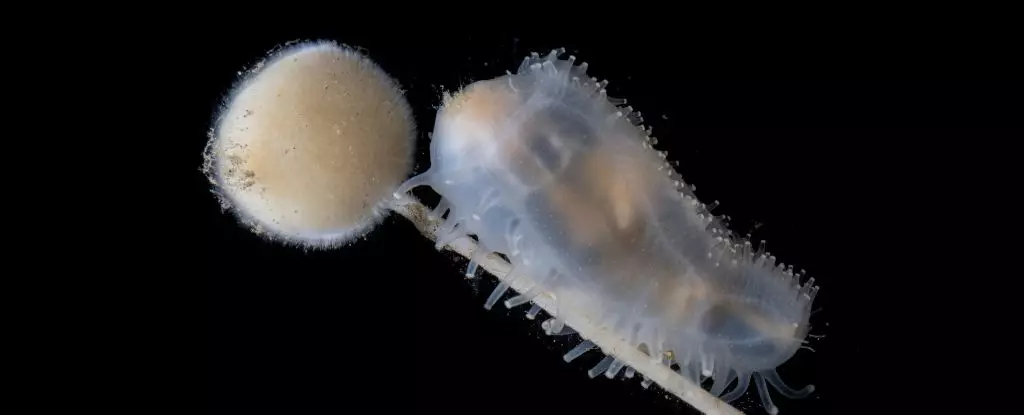In a groundbreaking expedition, the Schmidt Ocean Institute’s research vessel, Falkor (too), embarked on a 35-day mission to explore the mysterious depths of the South Sandwich Islands, one of the most isolated archipelagos on Earth. This effort was not merely an adventure into the unknown; it represented a collective plea to document the fragile ecosystems housed beneath the surface of the ocean. As climate change and deep-sea mining grow more threatening to marine biodiversity, initiatives like the Ocean Census are vital to shed light on these undiscovered habitats before they vanish forever.
The expedition faced relentless adversities, including fierce winds, tumultuous waves, and even the looming specter of icebergs. Nevertheless, the resilient crew remained undeterred, fueled by the promise of possibly revealing marine secrets that had evaded human observation until now.
Surprising Finds: Life Around Hydrothermal Vents
Among the astonishing discoveries made during the expedition were vibrant ecosystems thriving in the vicinity of hydrothermal vents. These underwater structures, formed by volcanic activity, are teeming with life, a stark contrast to the barren depths typically associated with such remote locations. The researchers were captivated by stunning visuals of a vermillion coral garden located around the Humpback Seamount, where these vents burst to life at a depth of approximately 700 meters (over 2,300 feet).
The tallest chimney observed towered at an impressive four meters (13 feet), an engineering marvel of nature, adorned with a plethora of life forms such as barnacles and sea snails. These vents have become miniature biomes, likened to skyscrapers in an underwater metropolis, where swarms of shrimp danced around the structures, illustrating the vitality hidden within this desolate environment.
New Discoveries: A Glimpse into the Unknown
Perhaps the most exhilarating aspect of the expedition was the unveiling of previously undocumented species and behaviors. Hydrographer Jenny Gales expressed her wonder at discovering hydrothermal vents that were entirely new to science. Such moments of revelation serve as a reminder of how much the ocean still harbors secrets, waiting for inquisitive explorers to unveil their mysteries.
Photography from blackwater guru Jialing Cai provided breathtaking snapshots of life at extreme depths. One such photograph featured an exquisite yet unidentified nudibranch, highlighting the intricate beauty that exists in the harshest conditions. In a striking contrast, a glimpse of a grenadier fish marred by parasitic copepods raised questions about the ecological challenges species face in these extreme environments.
Furthermore, the sighting of snailfish eggs mimicking the exotic landscapes of black coral opened the door to new discussions among marine biologists. This novel finding reflects an expanding understanding of reproductive behaviors within this unique ecosystem, pushing the boundaries of traditional marine biology.
Urgency in Understanding Our Oceans
Marine biologist Michelle Taylor, the head of science for the Ocean Census project, encapsulated the expedition’s significance by stating that it offers a rare glimpse into one of the ocean’s most biologically rich and remote areas. This exploration is more than an academic exercise; it serves as a clarion call to build awareness about the dwindling health of our oceans. The urgency of these discoveries cannot be overstated, as they provide crucial data necessary for developing strategies to mitigate future threats posed by human activities.
By embarking on such an ambitious venture, the team hopes to lay a foundation for a more profound comprehension of marine ecosystems, especially those lurking in the shadows of our understanding. The expedition illustrates that even in the most unreachable territories, life finds a way to flourish against all odds. This narrative sets a hopeful tone, reminding us that, with dedication and innovation, we can unlock the secrets of our oceans and ensure their preservation for future generations.

